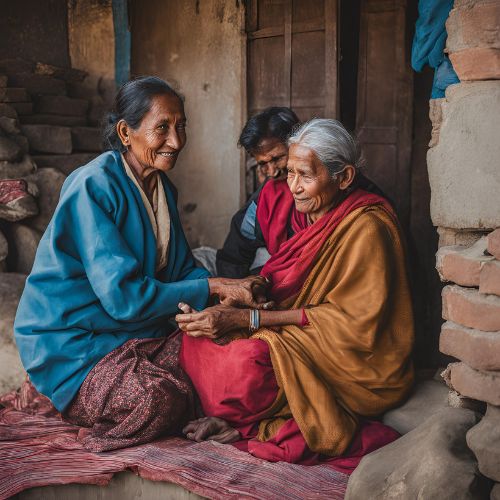
Understanding the health care systems in Nepal is crucial for grasping the country’s approach to public health and medical services. This article explores the various health care systems in Nepal, delving into their structures, functionalities, and roles in ensuring the well-being of its citizens. By focusing on the keyword “how many health care systems in Nepal,” we aim to provide a detailed and informative guide that aligns with Google SEO standards.
🌟 Introduction to Health Care Systems in Nepal
📋 What Defines a Health Care System?
A health care system encompasses all the organizations, institutions, resources, and people whose primary purpose is to improve health. In Nepal, the health care system is a mix of public and private sectors, non-governmental organizations (NGOs), and community-based health initiatives.
📋 Importance of Health Care Systems
Health care systems are vital for delivering medical services, promoting public health, preventing diseases, and ensuring access to necessary treatments. They play a crucial role in improving the quality of life and achieving health equity among the population.
🌟 Overview of Health Care Systems in Nepal
🚀 Public Health Care System
🌟 Structure and Organization
Description: The public health care system in Nepal is primarily managed by the Ministry of Health and Population (MoHP). It includes a network of hospitals, primary health care centers, health posts, and sub-health posts. Benefits: Provides essential health services, including preventive, promotive, curative, and rehabilitative care, especially in rural and underserved areas.
🌟 Funding and Resources
Description: Funded by the government, international donors, and development partners. Resources include medical staff, equipment, and infrastructure. Benefits: Ensures access to basic health services for all citizens, particularly the economically disadvantaged.
🚀 Private Health Care System
🌟 Structure and Organization
Description: The private health care system comprises private hospitals, clinics, and diagnostic centers. It operates on a for-profit basis and offers a wide range of specialized medical services. Benefits: Provides high-quality care, advanced medical technologies, and shorter waiting times for patients who can afford it.
🌟 Funding and Resources
Description: Funded through out-of-pocket payments, private insurance, and corporate investments. Resources include specialized medical professionals, state-of-the-art equipment, and modern facilities. Benefits: Enhances the overall quality of health care services and offers alternative options for patients.
🚀 Non-Governmental Organizations (NGOs)
🌟 Structure and Organization
Description: NGOs play a significant role in Nepal’s health care system, focusing on public health initiatives, community health, and specialized health services. Benefits: Address health needs that are often neglected by the public and private sectors, such as maternal and child health, infectious diseases, and health education.
🌟 Funding and Resources
Description: Funded by international donors, grants, and donations. Resources include community health workers, mobile clinics, and health education programs. Benefits: Provides targeted health interventions and reaches marginalized and remote populations.
🚀 Community-Based Health Initiatives
🌟 Structure and Organization
Description: Community-based health initiatives involve local communities in health care delivery, utilizing community health volunteers and local health committees. Benefits: Empowers communities, improves health literacy, and enhances the sustainability of health interventions.
🌟 Funding and Resources
Description: Funded by government programs, NGOs, and community contributions. Resources include trained community health volunteers, health education materials, and basic medical supplies. Benefits: Strengthens primary health care at the grassroots level and fosters community ownership of health programs.
🌟 Key Components of Nepal’s Health Care System
🚀 Primary Health Care
🌟 Services and Accessibility
Description: Primary health care includes services such as immunizations, maternal and child health, family planning, and basic curative care. Benefits: Ensures accessible and affordable health services for all, particularly in rural areas.
🚀 Secondary and Tertiary Health Care
🌟 Services and Accessibility
Description: Secondary health care includes district hospitals providing specialized services, while tertiary health care involves advanced medical care in regional and teaching hospitals. Benefits: Offers specialized treatments and advanced medical procedures for complex health conditions.
🚀 Health Workforce
🌟 Training and Distribution
Description: The health workforce in Nepal includes doctors, nurses, midwives, community health workers, and traditional healers. Training programs are provided by medical colleges, nursing schools, and health training institutes. Benefits: Ensures a skilled and competent health workforce to meet the health care needs of the population.
🚀 Health Infrastructure
🌟 Facilities and Equipment
Description: Health infrastructure includes hospitals, health centers, clinics, and diagnostic facilities equipped with necessary medical equipment and technology. Benefits: Provides the physical foundation for delivering health care services and supports effective health interventions.
🌟 Challenges and Opportunities in Nepal’s Health Care System
🚀 Challenges
🌟 Geographic and Socioeconomic Barriers
Description: Nepal’s diverse geography and socioeconomic disparities pose significant challenges in ensuring equitable access to health care services. Benefits: Identifies areas needing targeted interventions and resource allocation.
🌟 Health Workforce Shortages
Description: There is a shortage of skilled health professionals, particularly in rural and remote areas. Benefits: Highlights the need for policies to attract and retain health workers in underserved regions.
🌟 Funding and Sustainability
Description: Limited financial resources and reliance on donor funding affect the sustainability of health programs. Benefits: Emphasizes the importance of developing sustainable financing mechanisms for health care.
🚀 Opportunities
🌟 Health System Reforms
Description: Ongoing health system reforms aim to strengthen primary health care, improve health governance, and enhance service delivery. Benefits: Provides a roadmap for achieving universal health coverage and improving health outcomes.
🌟 Technological Advancements
Description: The adoption of digital health technologies, telemedicine, and mobile health can improve health care access and efficiency. Benefits: Leverages technology to overcome geographic barriers and enhance health care delivery.
🌟 Community Engagement
Description: Increasing community participation in health care planning and delivery can improve the effectiveness and sustainability of health programs. Benefits: Empowers communities and fosters a sense of ownership and responsibility for health outcomes.

🌟 Conclusion: The Future of Health Care in Nepal
Nepal’s health care system is a complex network of public, private, NGO, and community-based services, each playing a vital role in addressing the health needs of its population. Understanding the diverse components and their interconnections is crucial for improving health care delivery and achieving better health outcomes.
While challenges such as geographic barriers, workforce shortages, and funding constraints persist, there are significant opportunities for growth and improvement through health system reforms, technological advancements, and community engagement. By leveraging these opportunities and addressing the existing challenges, Nepal can move closer to achieving universal health coverage and ensuring that all citizens have access to quality health care services.
As the country continues to develop and modernize its health care system, ongoing collaboration among government agencies, private sector stakeholders, NGOs, and local communities will be essential. Together, they can create a resilient and responsive health care system that meets the evolving needs of the Nepalese population.



















